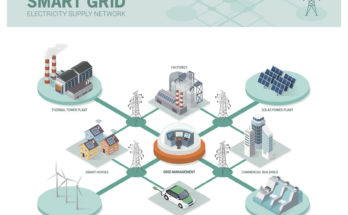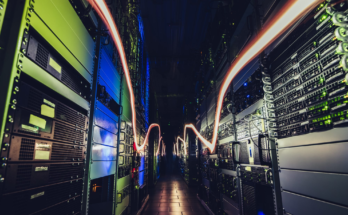
How Hitachi Energy’s Nostradamus AI Is Revolutionizing the Energy Sector
The global energy landscape is undergoing unprecedented change. As nations strive to meet decarbonization goals and integrate renewables, the complexity of managing grids, forecasting demand, and balancing intermittent energy sources has skyrocketed. Traditional tools, reliant on manual processes and static models, are no longer sufficient. Enter artificial intelligence (AI)—a technology reshaping energy management with unprecedented precision, scalability, and adaptability. At the forefront of this revolution is Hitachi Energy’s Nostradamus AI, a purpose-built solution transforming how utilities, grid operators, and energy traders navigate the challenges of the 21st century .
The Evolution of Energy Forecasting
Energy forecasting has always been critical for grid stability and economic efficiency. Historically, utilities relied on historical consumption patterns and rudimentary statistical models. However, the rise of renewables—solar and wind—has introduced volatility that these models cannot handle. Solar generation fluctuates with cloud cover, and wind farms depend on unpredictable weather patterns. Compounding this challenge is the exponential growth of data: modern grids generate 400+ billion data points annually from wind turbines alone, while smart meters produce thousands of times more data than analog predecessors .
Legacy systems struggle to consolidate or interpret this data deluge, leading to inefficiencies. For example, manual forecasting often results in errors, delayed responses, and an inability to factor in real-time variables like weather changes or market price shifts. This gap has created a pressing need for AI-driven solutions that can process vast datasets, identify patterns, and deliver actionable insights at speed.

Nostradamus AI: A Game-Changer for the Energy Sector
Hitachi Energy’s Nostradamus AI addresses these challenges head-on. Launched in late 2024, this cloud-native platform combines 30 years of energy market data with machine learning to generate forecasts 20% more accurate than industry benchmarks . Its capabilities span:
- Load Forecasting: Predicting energy demand with granular precision, accounting for variables like weather, economic activity, and consumer behavior.
- Renewable Generation Forecasting: Modeling solar and wind output using real-time weather data and historical performance metrics.
- Market Price Predictions: Anticipating price fluctuations in energy markets to optimize trading strategies.
- Grid Stability Management: Identifying potential imbalances and automating corrective actions to prevent outages .
Key Innovations
- Algorithm-Agnostic Architecture: Nostradamus AI supports multiple machine learning models (e.g., LSTM, GRU) and allows users to test algorithms for specific use cases, ensuring flexibility .
- Pre-Tuned Pipelines: Configurable forecasting “pipelines” integrate user-specific data (e.g., asset performance, third-party inputs) to generate tailored predictions .
- Cloud Scalability: The platform can generate 100,000+ forecasts in minutes, scaling from single turbines to entire grids .
- Transparency: Unlike “black-box” AI systems, Nostradamus AI provides clear explanations of parameter tuning and model performance, critical for regulatory compliance .
Case Studies: AI in Action
Case Study 1: Balancing Renewable Intermittency in California
California’s grid, heavily reliant on solar power, faces daily challenges with the “duck curve”—a steep drop in solar generation at sunset, coinciding with peak demand. A major utility adopted Nostradamus AI to forecast solar output and optimize battery storage dispatch. By integrating weather forecasts, historical generation data, and real-time grid performance, the AI reduced curtailment of renewable energy by 18% and cut reliance on fossil-fuel peaker plants during evening peaks .
Case Study 2: Predictive Maintenance in European Wind Farms
A European energy provider used Nostradamus AI to predict turbine failures across its offshore wind portfolio. By analyzing vibration data, lubrication metrics, and maintenance logs, the AI identified 92% of potential failures 48 hours in advance, reducing unplanned downtime by 30% and saving €4.2 million annually .
Case Study 3: Demand Response Optimization in Japan
A Tokyo-based utility leveraged the platform to design dynamic pricing models. By forecasting hourly demand and correlating it with weather and event schedules, the utility incentivized consumers to shift usage to off-peak periods. This flattened demand curves, lowering grid stress and reducing operational costs by 15% .
Overcoming Challenges: From Data Silos to Workforce Adaptation
While AI offers immense potential, its adoption is not without hurdles:
- Data Integration: Many utilities operate with siloed datasets. Nostradamus AI’s API-driven architecture enables seamless integration with legacy systems, breaking down data barriers .
- Workforce Upskilling: Energy professionals often lack AI expertise. Hitachi addresses this through intuitive interfaces and a “forecast wizard” that guides users through a 5-step process .
- Regulatory Compliance: Transparent reporting features ensure forecasts meet stringent regulatory standards, a requirement in markets like the EU and North America .
The Future of AI in Energy Management
Looking ahead, AI’s role will expand into new frontiers:
- Digital Twins: Virtual replicas of grid assets will enable real-time simulations, optimizing maintenance and disaster response .
- Energy Communities: AI will facilitate peer-to-peer energy trading in decentralized grids, empowering consumers to become “prosumers” .
- Carbon Reduction: By optimizing fossil fuel plant efficiency and accelerating renewable integration, AI could reduce global emissions by 1.5 gigatons annually by 2030 .
Conclusion
Hitachi Energy’s Nostradamus AI exemplifies how AI is transforming energy management from a reactive discipline into a proactive, data-driven science. By enhancing forecasting accuracy, stabilizing grids, and unlocking new revenue streams, it is paving the way for a resilient, low-carbon energy future. As one industry leader noted, “Embracing AI in the power sector is not just a choice—it is an imperative” . For utilities, the message is clear: adapt or risk being left behind in the energy transition.
Sources:


